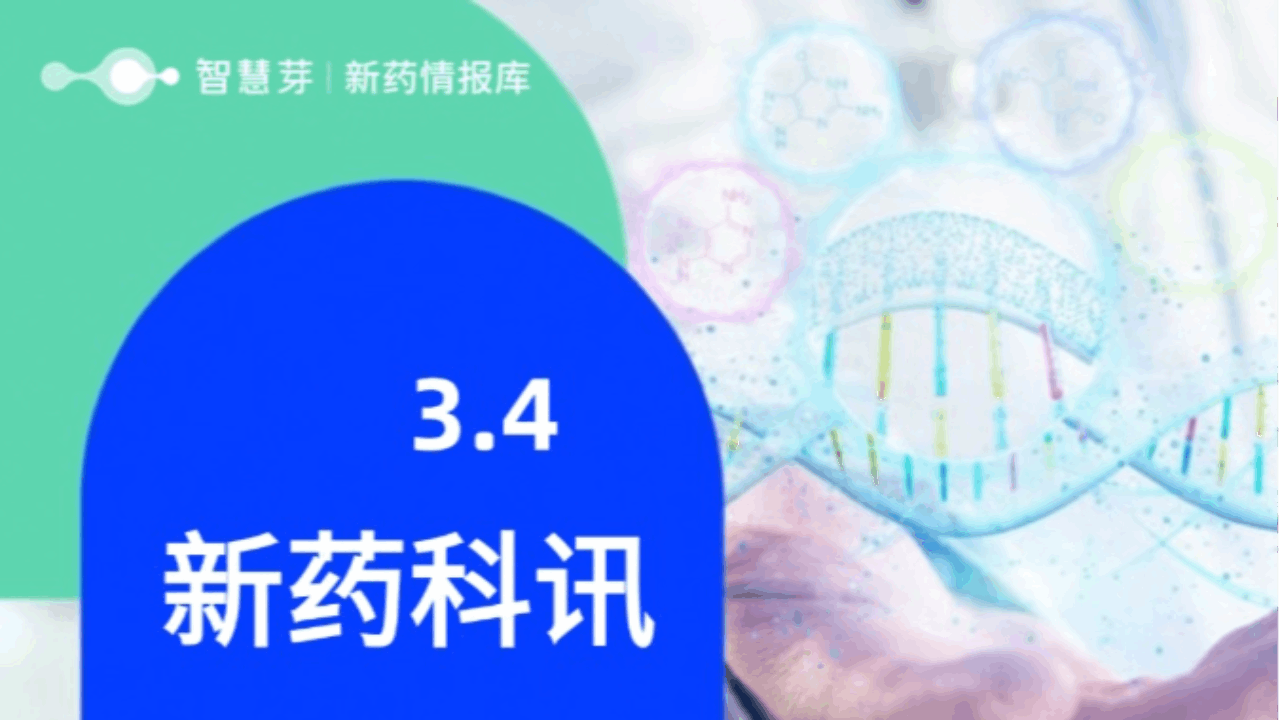预约演示
更新于:2025-09-09
GlaxoSmithKline, Inc.
更新于:2025-09-09
概览
标签
感染
肿瘤
呼吸系统疾病
小分子化药
预防性疫苗
重组蛋白
疾病领域得分
一眼洞穿机构专注的疾病领域
暂无数据
技术平台
公司药物应用最多的技术
暂无数据
靶点
公司最常开发的靶点
暂无数据
| 排名前五的药物类型 | 数量 |
|---|---|
| 小分子化药 | 27 |
| 预防性疫苗 | 8 |
| 重组蛋白 | 3 |
| ADC | 2 |
| 单克隆抗体 | 2 |
关联
44
项与 GlaxoSmithKline, Inc. 相关的药物靶点- |
作用机制 免疫刺激剂 |
原研机构 |
在研适应症 |
非在研适应症- |
最高研发阶段批准上市 |
首次获批国家/地区 美国 |
首次获批日期2023-05-03 |
作用机制 SARS-CoV-2 S protein抑制剂 |
在研适应症 |
最高研发阶段批准上市 |
首次获批国家/地区 美国 |
首次获批日期2021-05-26 |
1
项与 GlaxoSmithKline, Inc. 相关的临床试验ISRCTN15188976
In situ detection of lung inflammation in chronic obstructive pulmonary disease using 18-fluorodeoxyglucose and positron emission tomography
开始日期2005-01-02 |
申办/合作机构 |
100 项与 GlaxoSmithKline, Inc. 相关的临床结果
登录后查看更多信息
0 项与 GlaxoSmithKline, Inc. 相关的专利(医药)
登录后查看更多信息
68
项与 GlaxoSmithKline, Inc. 相关的文献(医药)2025-06-01·JCO Oncology Practice
Financial Toxicity Among Patients With Advanced Solid Tumors Participating in Early-Phase Clinical Trials
Article
作者: Blanter, Julia ; Wu, Kathy ; DeMerchant, Mandy ; Hapanowicz, Olivia ; Eder, Joseph P. ; Lucas, Natalie ; Fazilov, Gabriela ; Lu, Ashley ; Marron, Thomas U. ; Smith, Cardinale B. ; Xu, Suzanne ; Van Hyfte, Grace ; LoRusso, Patricia M. ; Lachowicz, Michael ; Werner, Michael ; Hofstatter, Erin ; Galsky, Matthew D. ; Ahmad, Maham ; Doroshow, Deborah B. ; Shelton, Gary ; Kier, Melanie
PURPOSE:
Financial toxicity (FT) adversely influences patient quality of life and is a barrier to clinical trial enrollment. Early-phase clinical trials (EPCTs) recruit patients who may have high baseline FT and require additional visits and procedures, potentially increasing FT.
METHODS:
In this prospective survey study, we sought to assess FT at baseline and after 2 months among patients with advanced solid malignancies participating in EPCTs. Participants were age 18 years and older, were English-speaking, and were treated at the Yale Cancer Center (Yale) and the Tisch Cancer Institute at Mount Sinai (Mount Sinai). At the time of consent and 2 months later, patients completed a sociodemographic questionnaire as well as the 11-item validated Comprehensive Score for Financial Toxicity (COST) instrument. Primary outcomes were baseline COST score and change in COST score from baseline to 2 months. Lower score is associated with higher FT.
RESULTS:
One hundred forty-six patients completed survey 1. Mean age was 61.5 years and 50.7% were male. The most common histologies were lung (17.8%), colorectal (16.4%), and breast (12.3%) cancers. Mean baseline COST score was 22.12 (standard deviation, 8.01). FT was associated with being a primary wage earner (
P
= .044) and inversely associated with age (
P
= .025). Seventy-one patients completed survey 2. Among 71 patients who completed both surveys, there was no significant difference in COST score between surveys 1 and 2 (
P
= .28). Race, ethnicity, education, and household income were not associated with baseline COST score or change in FT.
CONCLUSION:
Moderate FT was reported at baseline and on trial among EPCT participants. No change in FT was observed between time points. Additional efforts should be made to decrease FT associated with EPCT participation to maximize access to novel therapies.
2023-03-11·BMC medical research methodology
Correction to: A tutorial on pilot studies: the what, why and how.
作者: Thabane, Marroon ; Cheng, Ji ; Ma, Jinhui ; Giangregorio, Lora ; Goldsmith, Charles H ; Ismaila, Afisi ; Thabane, Lehana ; Rios, Lorena P ; Chu, Rong ; Robson, Reid
2022-08-01·International journal of toxicology
Increasing the Reuse of Protein Non-Naïve Nonhuman Primates in Pharmaceutical Drug Discovery and Development: An Overview and Industry Position on the Challenges and Benefits
Article
作者: Miranda, Sonia ; Mattis, Charles ; Malisauskas, Mantas ; Georgi, Katrin ; Lepherd, Michelle ; Shuster, David ; Burns, Monika ; Hukkanen, Renee R. ; Shaw, David ; de Zafra, Christina ; Bratcher, Natalie ; Lao, Yanbin ; Carosino, Christopher ; Graff, Candace ; Lee, Donna ; Santos, Rosemary ; Fancher, R. Marcus ; Reed, Lori ; Lange, Amber ; Johnson, Colena ; Maguire, Sean ; Manuel, Melinda ; Sayers, Brian
The IQ Consortium NHP Reuse Working Group (WG) comprises members from 15 pharmaceutical and biotechnology companies. In 2020, the WG developed and distributed a detailed questionnaire on protein non-naïve NHP reuse to the WG member companies. The WG received responses from key stakeholders including principal investigators, facility managers, animal welfare officers and research scientists. This paper’s content reflects the consolidated opinion of the WG members and the questionnaire responses on the subject of NHP reuse within nonclinical programs at all stages of research and development. Many of the pharmaceutical companies represented in the working group or participating in the questionnaire have already achieved some level of NHP reuse in their nonclinical programs, but the survey results suggested that there is significant potential to increase NHP reuse further and a need to understand the considerations involved in reuse more clearly. The WG has also focused carefully on the inherent concerns and risks of implementing protein non-naive NHP reuse and has evaluated the best methods of risk assessment and decision-making. This paper presents a discussion on the challenges and opportunities surrounding protein non-naïve NHP reuse and aims to stimulate further industry dialogue on the subject and provide guidance for pharmaceutical companies to establish roadmaps and decision trees enabling increased protein non-naïve NHP reuse. In addition, this paper represents a solid basis for collaborative engagement between pharmaceutical and biotechnology companies with contract research organizations (CROs) to discuss how the availability of protein non-naïve NHP within CROs can be better leveraged for their use within nonclinical studies.
140
项与 GlaxoSmithKline, Inc. 相关的新闻(医药)2025-05-14
– GALAXIES Lung-201 did not meet established criteria for clinically meaningful improvements in progression free survival
– Based on totality of data, iTeos and GSK have agreed to terminate the belrestotug development program
– iTeos has initiated a targeted review of strategic alternatives to maximize shareholder value
May 13, 2025 -- iTeos Therapeutics, Inc. (Nasdaq: ITOS), a clinical-stage biopharmaceutical company pioneering the discovery and development of a new generation of immuno-oncology therapeutics for patients, today reported topline results from an updated interim analysis of GALAXIES Lung-201, the Phase 2 platform study sponsored by iTeos’ development partner GSK assessing the belrestotug + dostarlimab doublet in previously untreated, unresectable, locally advanced or metastatic PD-L1 high non-small cell lung cancer (NSCLC).
The GALAXIES Lung-201 data continued to demonstrate clinically meaningful improvements in the trial’s primary endpoint of objective response rate (ORR), however the analysis did not meet established criteria for clinically meaningful improvements in the secondary endpoint of progression free survival in the belrestotug + dostarlimab combination cohorts versus dostarlimab monotherapy. Additionally, an interim analysis of the GALAXIES H&N-202 Phase 2 trial showed a trend below the meaningful threshold for ORR in the belrestotug combination cohorts vs. dostarlimab monotherapy in PD-L1 positive head and neck squamous cell carcinoma.
Based on these results, iTeos and GSK have made the decision to terminate the belrestotug development program and end the collaboration. All belrestotug-containing cohorts are ending, and any new enrollment in the ongoing GALAXIES Lung-301 Phase 3 trial is ending. GSK is communicating with investigators, institutional review boards, ethics committees, and health authorities about next steps for appropriate management of currently enrolled patients. The Company is taking immediate steps to preserve capital and has initiated a targeted process to identify opportunities that preserve and maximize shareholder value. iTeos has engaged TD Cowen to advise on this process.
“We are truly disappointed by the results from GALAXIES Lung-201,” said Michel Detheux, Ph.D., president and chief executive officer of iTeos. “Following the analysis of the TIGIT data generated to-date with GSK, we have made the mutual decision to discontinue development of all ongoing TIGIT studies. We are grateful to all patients, caregivers, and investigators involved in the GALAXIES studies and believe it is important to share these data with the scientific community at an upcoming medical meeting in order to advance our collective understanding of immuno-oncology and TIGIT.”
“Since founding this company over a decade ago, I could not be prouder of the team we have built, the quality of science produced, and our collective commitment to improving the lives of cancer patients in need. However, given current market conditions and our appreciation of the responsibility to our valued shareholders, we believe the best path forward is to promptly evaluate a full range of strategic alternatives to unlock the value of our assets. With a strong balance sheet and a commitment to disciplined execution, we are well positioned to pursue opportunities that maximize shareholder value,” continued Dr. Detheux.
iTeos Therapeutics is a clinical-stage biopharmaceutical company pioneering the discovery and development of a new generation of immuno-oncology therapeutics for patients. iTeos Therapeutics leverages its deep understanding of tumor immunology and immunosuppressive pathways to design novel product candidates with the potential to restore the immune response against cancer. iTeos Therapeutics is headquartered in Watertown, MA with a research center in Gosselies, Belgium.
Belrestotug is an Fc active human immunoglobulin G1, or IgG1, monoclonal antibody (mAb) targeting T cell immunoglobulin and immunoreceptor tyrosine-based inhibitory motif domains (TIGIT), an important inhibitory receptor which contributes to the suppression of adaptive and innate immune responses against cancer. As an optimized high-affinity, potent anti-TIGIT mAb, belrestotug is designed to enhance the antitumor response through a multifaceted immune modulatory mechanism by engaging with TIGIT and FcγR, a key regulator of immune responses which induces cytokine release and antibody dependent cellular cytotoxicity (ADCC).
The content above comes from the network. if any infringement, please contact us to modify.

临床结果免疫疗法
2025-03-10
1. 百时美施贵宝O+Y免疫组合疗法获欧盟批准,一线治疗肝癌
3月8日,百时美施贵宝(Bristol Myers Squibb)宣布,欧盟委员会(EC)已批准其重磅PD-1抑制剂Opdivo(nivolumab)与CTLA-4靶向抗体Yervoy(ipilimumab)联用,一线治疗不可切除或晚期肝细胞癌(HCC)成人患者。欧盟的批准主要基于3期临床试验CheckMate-9DW的积极结果。这是一项3期随机、开放标签试验,评估Opdivo联合Yervoy与研究者选择的索拉非尼(sorafenib)或乐伐替尼(lenvatinib)单药治疗相比,用以治疗既往未接受过全身治疗的晚期HCC患者的疗效与安全性。数据显示,Opdivo联合Yervoy治疗显著延长患者的总生存期(OS),达到试验的主要临床终点。Opdivo加Yervoy联合疗法组患者的中位OS为23.7个月(95% CI:18.8–29.4),而活性对照药物组患者的中位OS为20.6个月(95% CI:17.5–22.5),风险比为0.79(0.65–0.96;p=0.018)。
2. 阿斯利康PD-L1单抗达到3期临床主要终点,胃癌围手术期治疗
3月7日,阿斯利康(AstraZeneca)公司宣布,3期临床试验MATTERHORN获得积极顶线结果。该试验评估了PD-L1抑制剂Imfinzi(durvalumab)与标准治疗FLOT(fluorouracil、leucovorin、oxaliplatin和docetaxel)联用的围手术期治疗方案与单纯围手术期化疗相比在可切除、早期及局部晚期(II期、III期、IVA期)胃癌和胃食管结合部(GEJ)癌患者中的疗效。患者在手术前接受了Imfinzi联合化疗的新辅助治疗,随后手术后接受Imfinzi联合化疗,最后进行Imfinzi单药治疗。结果显示,该方案在无事件生存期(EFS)这一主要终点上表现出统计学显著且具有临床意义的改善。在此前报告的关键性次要终点病理学完全缓解率(pCR)的中期分析中,Imfinzi组合治疗方案的pCR率与单纯新辅助化疗相比,提高两倍以上(19%比7%,p<0.00001)。详细数据将在即将召开的医学会议上公布,并与全球监管机构共享。
3. FDA批准2型黄斑毛细血管扩张症首款创新疗法
3月8日,Neurotech Pharmaceuticals宣布,美国FDA已批准Encelto(revakinagene taroretcel)上市,用于治疗2型黄斑毛细血管扩张症(MacTel)。新闻稿指出,这是FDA批准治疗MacTel的首个疗法。MacTel是一种罕见的神经退行性疾病,其特征为局部视网膜变性,并伴有视网膜血管的继发性改变。Encelto是一种眼部植入物,旨在将CNTF以持续的治疗剂量直接递送至视网膜,以延缓疾病进展。2期临床试验结果显示,与未治疗的眼睛相比,接受Encelto治疗的眼睛感光细胞丢失的进展显著降低。在24个月时,假手术眼的椭圆体带面积增加了0.213平方毫米,而治疗眼仅增加了0.148平方毫米。
4. GSK一年两次超长效IL-5单抗在美国申报上市
当地时间3月3日,葛兰素史克宣布,美国FDA已受理 Depemokimab(德莫奇单抗)用于两种适应症的生物制品许可申请。拟定的适应症为:对于患有以嗜酸性粒细胞表型为特征的2型炎症的哮喘成人和12岁及以上的儿童患者,使用中至高剂量吸入皮质类固醇 (ICS) 加另一种哮喘控制药物进行辅助维持治疗,以及对于控制不佳的慢性鼻窦炎伴鼻息肉 (CRSwNP) 成人患者进行辅助维持治疗。PDUFA日期为2025年12月16日。Depemokimab是一种靶向IL-5的单克隆抗体,也是首个在III期试验中进行评估并接受监管审查用于治疗这些疾病的超长效生物制剂。如果获得批准,该药将成为首个给药周期为6个月的超长效生物药。
5. 第一三共/阿斯利康HER2 ADC首个胃癌三期临床取得成功
3月3日,第一三共宣布HER2 ADC药物Enhertu,在DESTINY-Gastric04的3 期临床试验中取得积极顶线结果,对于二线 HER2 阳性(IHC 3+ 或 IHC 2+/ISH+)不可切除和/或转移性胃或胃食管连接部 (GEJ) 腺癌患者,与雷莫芦单抗和紫杉醇等标准疗法相比, Enhertu在总生存期 (OS) 的主要终点方面表现出统计学上显着和临床意义上的改善。DESTINY-Gastric04 的数据将在即将召开的医学会议上公布并与全球监管机构共享。
6. 百济神州「替雷利珠单抗」在美获批新适应症,一线食管鳞癌
3月4日,百济神州宣布,美国FDA已批准百泽安®(替雷利珠单抗)联合含铂化疗用于肿瘤表达PD-L1(≥1)的不可切除或转移性食管鳞状细胞癌(ESCC)成人患者一线治疗。本次替雷利珠单抗获批新适应症是基于百济神州RATIONALE-306试验的结果。替雷利珠单抗是一款人源化IgG4抗PD-1单克隆抗体,此前已在美国获批作为单药用于治疗既往接受过系统化疗(不含PD-1/PD-L1抑制剂)后不可切除或转移性ESCC的成人患者,以及联合化疗用于胃和胃食管结合部(G/GEJ)癌成人患者的一线治疗。
7. FDA批准罗氏中风药物替奈普酶
3月3日,罗氏旗下公司基因泰克宣布,美国FDA已批准替奈普酶(商品名:TNKase)用于治疗成人急性缺血性中风(AIS)。新闻稿指出,这是近30年来 FDA 批准的首个中风药物。替奈普酶并不是一款新疗法,此前该产品早已获得FDA批准用于治疗成人急性ST段抬高型心肌梗死。 替奈普酶是一款组织纤溶酶原激活剂、凝块溶解剂和血栓溶解剂,以单次静脉 (IV) 推注的方式给药,给药时间为五秒钟。与标准治疗药物阿替普酶(静脉推注,输液60分钟)相比,替奈普酶给药速度更快、更简单。基因泰克计划在未来几个月推出一种新的25mg小瓶配置,以支持替奈普酶用于AIS的批准。
8. 潜在“first-in-class”细胞疗法在美国申报上市,治疗DMD心肌病
3月5日,Capricor Therapeutics公司宣布,美国FDA已受理其为潜在“first-in-class”细胞疗法deramiocel递交的生物制品许可申请(BLA),用于治疗患有杜氏肌营养不良症(DMD)心肌病的患者。此外,FDA授予该BLA优先审评资格,预计在2025年8月31日之前完成审评。新闻稿指出,如果获批,deramiocel将成为治疗DMD心肌病的首款获批疗法。Deramiocel(又名CAP-1002)是一种同种异体细胞疗法,它们由心脏来源细胞(CDCs)组成。本次BLA主要基于2期临床试验HOPE-2及HOPE-2开放标签扩展(OLE)试验中现有的心脏数据,与自然病史数据进行比较。HOPE-2的临床试验数据显示,患者在接受deramiocel治疗1年后,与自然病史数据相比,患者上肢功能衰退速度减缓71%,而评估心脏功能的指标不但没有衰退,反而获得了改善。
9. 罗氏CD20单抗首个非肿瘤适应症申报上市
3月5日,罗氏宣布,美国FDA已接受该公司CD20单抗奥妥珠单抗 (Obinutuzumab,Gazyva/Gazyvaro)用于治疗狼疮性肾炎的补充生物制品许可申请 (sBLA)。FDA 预计将在 2025 年 10 月之前做出审批决定。奥妥珠单抗此前已获批治疗多种淋巴瘤适应症,本次是该药递交的首个非肿瘤适应症上市申请。此次上市申请是基于III期研究REGENCY(NCT04221477)的积极结果。数据显示,REGENCY研究达到了其主要终点;与单纯标准治疗相比,接受奥妥珠单抗联合标准治疗的患者中,近一半的患者实现了完全肾脏缓解 (CRR),具有统计学意义和临床意义的改善。此外,研究还显示,患者补体水平也得到了临床意义的改善。在美国之外,罗氏计划基于III期REGENCY研究的数据向欧洲EMA递交奥妥珠单抗该适应症的上市申请。
10. 复星医药1类肺癌新药申报上市
3月6日,CDE官网最新公示,复星医药成员企业复星万邦申报的1类新药丁二酸复瑞替尼胶囊的上市申请获得受理。公开资料显示,丁二酸复瑞替尼(SAF-189s,foritinib)为复星医药研发的创新型小分子化学药物,是新一代高效、具有中枢神经系统(CNS)渗透性的ALK/ROS1抑制剂,且具有较强的血脑屏障透过能力。在2024年的世界肺癌大会(WCLC)期间,复瑞替尼治疗ALK阳性非小细胞肺癌的3期REMARK研究的期中分析结果以最新突破性摘要(LBA)形式公布。在该研究中,复瑞替尼治疗基线脑转移的ALK阳性晚期NSCLC患者,颅内客观缓解率(ORR)可达到100%(vs 对照药为50%)。
1. 中国生物制药引进每日一次新型长效术后镇痛新药
3月6日,中国生物制药发布公告,称其已与清普生物就2类新药QP001在中国大陆地区达成独家合作协议。该产品已在中国和美国申报上市,有望成为国内首款每日一次的长效镇痛新型非甾体抗炎药(NSAIDs)注射液。QP001是国内唯一一款注册分类为2类新药的美洛昔康注射液。作为一种选择性COX-2抑制剂,QP001能够阻断引发身体疼痛和炎症的COX-2的释放,同时对COX-1影响较小,从而减轻胃肠道、血小板抑制等副作用。QP001的半衰期长达18-22小时,具有24小时的长效镇痛特性。
2. 蛋白降解新锐融资3100万美元,“剑指”神经退行性疾病
3月5日,TRIMTECH Therapeutics宣布完成3100万美元(2500万英镑)种子轮融资。本轮融资由剑桥创新资本(CIC)和SV Health Investors旗下的痴呆症发现基金(DDF)领投,M Ventures、辉瑞创投(Pfizer Ventures)、礼来(Eli Lilly and Company)等知名投资机构参投。总部位于英国剑桥的TRIMTECH Therapeutics,致力于通过选择性破坏致病蛋白质聚集来治疗中枢神经系统(CNS)和炎症性疾病。公司正在创建一个差异化的强效、高度特异性降解剂产品组合——TRIMTAC™和TRIMGLUEs™,这些药物能选择性地靶向清除有毒蛋白质,为治疗顽固性CNS和炎症性疾病提供新希望。
3. 超9亿美元!Jazz收购Chimerix,获得胶质瘤新药Dordaviprone
3月5日,Jazz Pharmaceuticals宣布将收购Chimerix,收购总价约9.35亿美元。此次收购价8.55美元/股相比于昨日收盘价溢价70%。Chimerix成立于2000年,首发管线为Dordaviprone,可以选择性结合DRD2和线粒体蛋白酶ClpP,用于治疗H3 K27M突变弥漫性胶质瘤。2024年12月,Chimerix递交了Dordaviprone的上市申请,2025年2月获得FDA受理并获得优先审评资格,PDUFA日期为2025年8月18日。
4. 1.87亿美元!下一代ADC新锐完成A轮融资
3月3日,Callio Therapeutics宣布完成1.87亿美元A轮融资。本轮融资由Frazier Life Sciences领投,Jeito Capital、Novo Holdings A/S等跟投。这家新成立的公司总部位于西雅图和新加坡,将利用A轮融资的收益,实现其靶向HER2的双载荷ADC,以及第二个未披露的ADC项目的临床概念验证。Callio Therapeutics正在开发下一代多载荷ADC,这种ADC采用差异化的有效载荷和接头技术,能够将多载荷靶向递送至肿瘤细胞,从而最大限度地提高治疗效果。Callio Therapeutics的首个项目是靶向HER2的双有效载荷ADC。
5. 超20亿美元!艾伯维引进一款长效减肥药,正式进军减肥领域
3月3日,AbbVie(NYSE:ABBV)和丹麦Gubra A/S(CPSE:Gubra)宣布了一项许可协议,开发GUB014295,这是一种治疗肥胖的潜在最佳长效胰淀素类似物(amylin analog)。根据协议条款,艾伯维将在全球范围内领导GUB014295的开发和商业化活动。Gubra将获得3.5亿美元的预付款,并有资格获得高达18.75亿美元的开发、商业和销售里程碑付款,以及全球净销售额的分层特许权使用费。交易的结束取决于监管部门的批准和其他惯例成交条件。
6. 超8亿美元!诺华引进一款新药,针对慢性荨麻疹当地时间
3 月 3 日,KYORIN 制药有限公司宣布,与诺华制药就 KYORIN 发现的 KRP-M223 及其备用化合物达成全球许可协议。根据该协议,KYORIN 授予诺华开发、制造和商业化 KRP-M223 的独家全球许可。KYORIN 保留了在日本商业化和为日本市场生产该产品的选择权,诺华保留了与 KYORIN 在日本共同推广的选择权。作为回报,KYORIN 将获得 5500 万美元的预付款,并有资格获得与 KRPM223 的开发、批准和商业化进展相关的高达 7.775 亿美元的里程碑付款,以及净销售额的分层版税。KRP-M223 是一种 MRGPRX2 拮抗剂,用于涉及肥大细胞的过敏性和炎症性疾病,如慢性自发性荨麻疹。
内容来源于网络,如有侵权,请联系删除。

临床终止First in Class引进/卖出上市批准基因疗法
2025-03-04
1. GSK一年两次超长效IL-5单抗在美国申报上市
当地时间 3 月 3 日,葛兰素史克宣布,美国 FDA 已受理 Depemokimab(德莫奇单抗)用于两种适应症的生物制品许可申请。拟定的适应症为:对于患有以嗜酸性粒细胞表型为特征的 2 型炎症的哮喘成人和 12 岁及以上的儿童患者,使用中至高剂量吸入皮质类固醇 (ICS) 加另一种哮喘控制药物进行辅助维持治疗,以及对于控制不佳的慢性鼻窦炎伴鼻息肉 (CRSwNP) 成人患者进行辅助维持治疗。PDUFA 日期为 2025 年 12 月 16 日。Depemokimab 是一种靶向 IL-5 的单克隆抗体,也是首个在 III 期试验中进行评估并接受监管审查用于治疗这些疾病的超长效生物制剂。如果获得批准,该药将成为首个给药周期为 6 个月的超长效生物药。
2. 第一三共/阿斯利康HER2 ADC首个胃癌三期临床取得成功
3月3日,第一三共宣布HER2 ADC药物Enhertu,在DESTINY-Gastric04的3 期临床试验中取得积极顶线结果,对于二线 HER2 阳性(IHC 3+ 或 IHC 2+/ISH+)不可切除和/或转移性胃或胃食管连接部 (GEJ) 腺癌患者,与雷莫芦单抗和紫杉醇等标准疗法相比, Enhertu在总生存期 (OS) 的主要终点方面表现出统计学上显着和临床意义上的改善。DESTINY-Gastric04 的数据将在即将召开的医学会议上公布并与全球监管机构共享。
3. 乐普生物EGFR ADC新药遗憾收到通知件
3月3日,据中国国家药品监督管理局(NMPA)官网消息,乐普生物的EGFR抗体偶联药物(ADC)维贝柯妥塔单抗(MRG003)收到药品通知件,这意味着其上市申请未获批准。维贝柯妥塔单抗(MRG003)是乐普生物研发的靶向EGFR的ADC,由EGFR靶向单抗与强效的微管抑制剂MMAE分子通过vc链接体偶联而成。2024年9月,乐普提交产品上市申请,用于既往经至少二线系统化疗(包括含铂化疗)和PD-(L)1治疗失败的复发/转移性鼻咽癌。申请被CDE纳入突破性和优先审评品种。
4. 强生抗癌组合疗法获CHMP积极意见,有望在欧盟获批
强生(Johnson & Johnson)公司日前宣布,欧洲药品管理局(EMA)人用药品委员会(CHMP)已推荐扩展Darzalex(daratumumab)皮下注射(SC)剂型的适应症,使用皮下注射Darzalex联合硼替佐米、来那度胺和地塞米松(D-VRd),一线治疗新确诊的多发性骨髓瘤成年患者。CHMP的推荐基于3期临床试验CEPHEUS的数据,该研究评估了D-VRd与硼替佐米、来那度胺和地塞米松(VRd)相比,在不适合接受移植或不计划将自体干细胞移植(ASCT)作为初始治疗的患者中的疗效和安全性。该研究数据此前已在2024年国际骨髓瘤学会(IMS)年会及2024年美国血液学会(ASH)年会上展示。
5. 第一三共/阿斯利康HER2 ADC获CHMP积极意见,有望再获欧盟批准
阿斯利康(AstraZeneca)与第一三共(Daiichi Sankyo)日前共同宣布,其联合开发的重磅抗体偶联药物(ADC)Enhertu(trastuzumab deruxtecan)获得欧洲药品管理局(EMA)人用药品委员会(CHMP)推荐在欧盟获批,作为单药用于治疗不可切除或转移性激素受体(HR)阳性、HER2低表达或HER2极低表达的乳腺癌成人患者,这些患者至少接受过一种内分泌疗法治疗转移性癌症,且被认为不适合接受内分泌疗法作为下一线治疗。CHMP的积极意见基于3期临床试验DESTINY‐Breast的结果。该试验结果在2024年美国临床肿瘤学会(ASCO)年会上展示,并发表于《新英格兰医学杂志》。
6. 诺华放射性癌症疗法1类新药在中国获批临床
3月3日,CDE官网公示,诺华(Novartis)申报的1类新药[225Ac]Ac-PSMA-617注射液获批临床,拟开发治疗[177Lu]Lu-PSMA靶向治疗期间或之后进展的PSMA阳性转移性去势抵抗性前列腺癌。根据诺华官网管线资料可知,这是一款靶向PSMA的放射性配体疗法(研发代号:AAA817),已经在国际范围内进入2/3期临床研究阶段。本次是该产品首次在中国获批IND。
1. 超20亿美元!艾伯维引进一款长效减肥药,正式进军减肥领域
3月3日,AbbVie(NYSE:ABBV)和丹麦Gubra A/S(CPSE:Gubra)宣布了一项许可协议,开发GUB014295,这是一种治疗肥胖的潜在最佳长效胰淀素类似物(amylin analog)。根据协议条款,艾伯维将在全球范围内领导GUB014295的开发和商业化活动。Gubra将获得3.5亿美元的预付款,并有资格获得高达18.75亿美元的开发、商业和销售里程碑付款,以及全球净销售额的分层特许权使用费。交易的结束取决于监管部门的批准和其他惯例成交条件。
2. 超8亿美元!诺华引进一款新药,针对慢性荨麻疹
当地时间 3 月 3 日,KYORIN 制药有限公司宣布,与诺华制药就 KYORIN 发现的 KRP-M223 及其备用化合物达成全球许可协议。根据该协议,KYORIN 授予诺华开发、制造和商业化 KRP-M223 的独家全球许可。KYORIN 保留了在日本商业化和为日本市场生产该产品的选择权,诺华保留了与 KYORIN 在日本共同推广的选择权。作为回报,KYORIN 将获得 5500 万美元的预付款,并有资格获得与 KRPM223 的开发、批准和商业化进展相关的高达 7.775 亿美元的里程碑付款,以及净销售额的分层版税。KRP-M223 是一种 MRGPRX2 拮抗剂,用于涉及肥大细胞的过敏性和炎症性疾病,如慢性自发性荨麻疹。
内容来源于网络,如有侵权,请联系删除。

上市批准临床成功突破性疗法优先审批引进/卖出
100 项与 GlaxoSmithKline, Inc. 相关的药物交易
登录后查看更多信息
100 项与 GlaxoSmithKline, Inc. 相关的转化医学
登录后查看更多信息
组织架构
使用我们的机构树数据加速您的研究。
登录
或

管线布局
2025年11月02日管线快照
管线布局中药物为当前组织机构及其子机构作为药物机构进行统计,早期临床1期并入临床1期,临床1/2期并入临床2期,临床2/3期并入临床3期
药物发现
5
20
临床前
临床1期
5
5
临床2期
申请上市
2
7
批准上市
其他
32
登录后查看更多信息
当前项目
登录后查看更多信息
药物交易
使用我们的药物交易数据加速您的研究。
登录
或

转化医学
使用我们的转化医学数据加速您的研究。
登录
或

营收
使用 Synapse 探索超过 36 万个组织的财务状况。
登录
或

科研基金(NIH)
访问超过 200 万项资助和基金信息,以提升您的研究之旅。
登录
或

投资
深入了解从初创企业到成熟企业的最新公司投资动态。
登录
或

融资
发掘融资趋势以验证和推进您的投资机会。
登录
或

生物医药百科问答
全新生物医药AI Agent 覆盖科研全链路,让突破性发现快人一步
立即开始免费试用!
智慧芽新药情报库是智慧芽专为生命科学人士构建的基于AI的创新药情报平台,助您全方位提升您的研发与决策效率。
立即开始数据试用!
智慧芽新药库数据也通过智慧芽数据服务平台,以API或者数据包形式对外开放,助您更加充分利用智慧芽新药情报信息。
生物序列数据库
生物药研发创新
免费使用
化学结构数据库
小分子化药研发创新
免费使用


